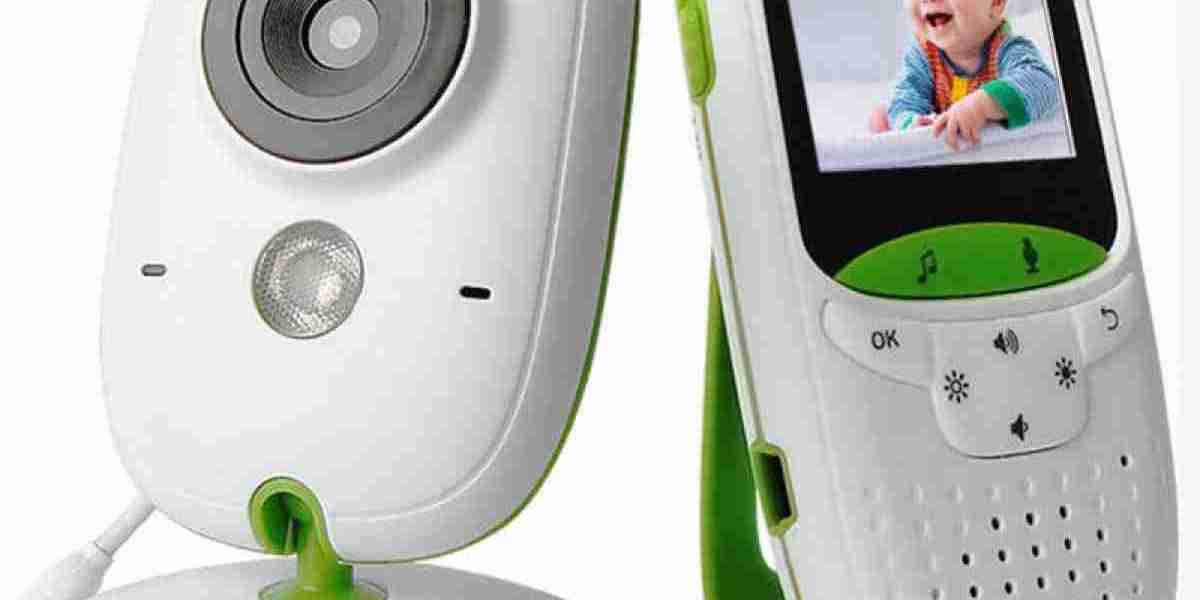The global baby monitor market has witnessed significant transformations in recent years, driven by technological advancements, changing consumer preferences, and evolving safety concerns. From traditional audio monitors to sophisticated AI-powered systems, the landscape of baby monitoring has expanded, offering parents a plethora of options to ensure their child's safety and well-being.
Market Growth and Projections
In 2024, the global baby monitor market was valued at approximately USD 1.4 billion and is projected to reach USD 3.7 billion by 2034, growing at a compound annual growth rate (CAGR) of 10.3% . This growth is attributed to several factors, including increased awareness about child safety, advancements in technology, and the rising number of dual-income households seeking reliable monitoring solutions.
Technological Innovations
AI Integration: Artificial Intelligence (AI) has revolutionized baby monitors by enabling features like movement detection, sleep tracking, and even facial recognition. For instance, Cubo Ai's smart baby monitor utilizes AI to detect potential safety hazards, such as face-covering or rollover risks, providing real-time alerts to parents .
Wearable Devices: Wearable baby monitors, such as the Owlet Smart Sock, track vital signs like heart rate and oxygen levels. These devices offer parents peace of mind by providing continuous health data, which can be accessed via smartphones .
Interactive Features: Modern baby monitors now come equipped with interactive features like two-way audio, lullabies, and night lights. These functionalities not only allow parents to soothe their babies remotely but also create a comforting environment for the child .
Market Segmentation
The baby monitor market can be segmented based on type, technology, distribution channel, and region:
By Type: The market comprises audio-only monitors, video monitors, and wearable monitors. Video monitors dominate the market share due to their enhanced surveillance capabilities .
By Technology: Digital monitors, including Wi-Fi and Bluetooth-enabled devices, are gaining popularity for their remote access features and ease of use.
By Distribution Channel: While offline retail channels accounted for a significant share in 2024, online sales are rapidly growing, driven by the convenience of e-commerce platforms and direct-to-consumer models .
By Region: North America leads the market, accounting for approximately 46.8% of the global share in 2024. The Asia-Pacific region is expected to witness the fastest growth due to increasing disposable incomes and urbanization .
Consumer Trends and Preferences
The demand for baby monitors is influenced by several consumer trends:
Health and Safety Concerns: Parents are increasingly prioritizing products that offer health monitoring features, such as heart rate and oxygen level tracking, to ensure their child's safety during sleep.
Convenience and Connectivity: The integration of baby monitors with smartphones and smart home systems allows parents to monitor their babies remotely, providing flexibility and peace of mind.
Privacy and Data Security: With the rise of connected devices, concerns about data privacy and security have emerged. Manufacturers are addressing these issues by implementing robust encryption methods and transparent data policies.
Challenges and Considerations
Despite the advancements, the baby monitor market faces certain challenges:
Data Privacy: The collection and transmission of sensitive data raise concerns about unauthorized access and potential misuse. Ensuring secure data handling practices is crucial to maintaining consumer trust.
False Alarms: While advanced monitoring features are beneficial, they can sometimes lead to false alarms, causing unnecessary anxiety for parents. Continuous refinement of detection algorithms is necessary to minimize such occurrences.
Cost: High-end baby monitors with advanced features can be expensive, limiting their accessibility to a broader audience. Manufacturers are working towards making these technologies more affordable without compromising on quality.
Future Outlook
The future of the baby monitor market looks promising, with several developments on the horizon:
Integration with Smart Home Ecosystems: As smart homes become more prevalent, baby monitors are expected to seamlessly integrate with other devices, such as smart speakers and lighting systems, to create a cohesive monitoring environment.
Advanced Health Monitoring: Future monitors may offer more comprehensive health tracking, including monitoring developmental milestones and detecting early signs of health issues.
Sustainability: With growing environmental concerns, there is a push towards developing eco-friendly baby monitors made from sustainable materials and energy-efficient technologies.
Conclusion
The baby monitor market is undergoing a significant transformation, driven by technological innovations and changing consumer demands. As parents seek more advanced and reliable solutions to ensure their child's safety, manufacturers are continuously evolving their products to meet these expectations. With ongoing advancements and a focus on consumer needs, the future of baby monitoring looks set to offer even more integrated, intelligent, and secure solutions for modern parenting.



